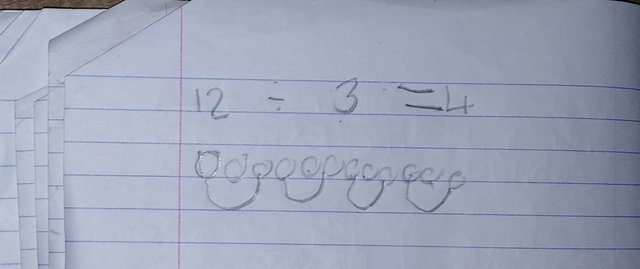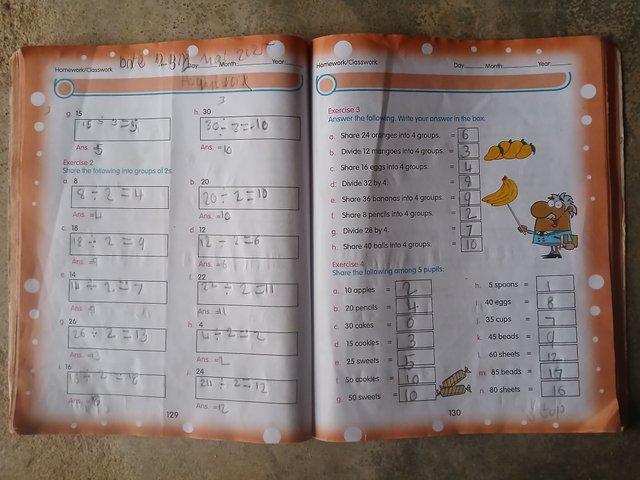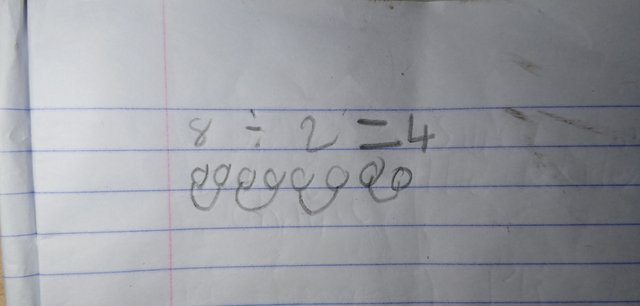Solving Mathematics as Homework.
Mathematics Homework.
Education in the 21st century is far from what we saw in our days, and this poses a challenge when school work is brought home and labelled as homework. It only gets worse when the homework is on pages 129 and 130 of 'Mathematics for Primary Schools, Book 1' by Iconic Showers Books.
Chapter 13 focuses on the Division of numbers, explaining that "division is splitting or sharing of things into equal parts or groups"
This chapter introduces new words like:
Dividend: The number being divided.
Divisor: The number of groups to make.
Quotient: The result of the division.
A very good example for illustrating these new words is 12 ÷ 3 = 4: This is to be read as twelve divided by three equals four (understood as 12 to be divided into 3 places)
Where:
- Dividend: = 12
- Divisor: = 3
- Quotient: = 4
The challenge comes when this is to be squeezed into the head of a 5-year-old kid in such a way that they can solve problems involving the division of numbers.
You could try an age-appropriate visual solution like the one shown below
If 12 balls are arranged or split into groups of 3s, it makes 4 groups of balls.
Alternatively
| You have 12 cookies to be arranged into three boxes. Put one in each box and go around until all the cookies are shared. Now, let us count how many cookies are in each box. Each box holds 4 cookies. So if you divide 12 into 3 places, you will get 4. |
|---|
The kids may not have boxes in class but will have a book and a pencil to do some visual and manipulative-based learning. For this example, draw 12 circles on the page, then use the pencil to cluster the circles in groups of 3. Counting the number of groups gives us a total of 4 groups.
12 ÷ 3 = 4
Caution
Be careful. Introducing different methods can reinforce learning but could also confuse the kid if the main concept is not made to stand out.
I would advise you to adopt a single approach till you are sure the concept has taken root before introducing alternatives depending on your kid's ability to comprehend and your teaching skills.
Let's focus on writing out the dividend as 12 circles, then cluster it into 3s (the Divisor), then count and give the number of groups we have as the answer, also known as Quotient, which is 4 in this example.
Textbook Examples
Example 2a:
In example 2a, we have 8 to be shared in groups of 2s. Basically 8 ÷ 2 =
Obviously, the answer is 4.
When 8 is arranged in groups of 2s, it creates 4 groups because 8 ÷ 2 = 4
Example 2b:
20 balls divided into groups of 2
This will make 10 groups of 2s
So 20 ÷ 2 = 10
Conquering the fear of mathematics, one homework at a time
Following along as my daughter solves her homework
Knowledge and confidence grow exponentially as new lessons are assimilated, creating a network with existing knowledge and making it easier to absorb larger chunks of information. Expelling errors and misconceptions that appear as misfits and inconsistencies will pave the way for success.
Remain inquisitive, ready to learn, unlearn, and relearn, and your kids will follow your example, excelling beyond where you are.
The fear of crunching numbers is contagious, if you fear Mathematics, your kids will dread it. They may get paralysed by such fear. It all starts with the words "Mathematics is too difficult..." and you have lost the fight without getting into the ring.
Conclusion
Help your child conquer the fear of mathematics, one homework at a time. It is not as impossible as you have been made to believe.
Media Credit |
|---|
| Composer | @manuelhooks |
|---|---|
| Graphics from | GalaxyA15 |
| Entry type | Freelance |
| Date | Sunday.. 25th May |
| (@) 2025 |
#fintech #education #club5050
#diy #creativewriting
#steemexclusive
#nigeria





https://x.com/manuelhook41759/status/1926423934699745443
please vote kafio.wit following the steps below